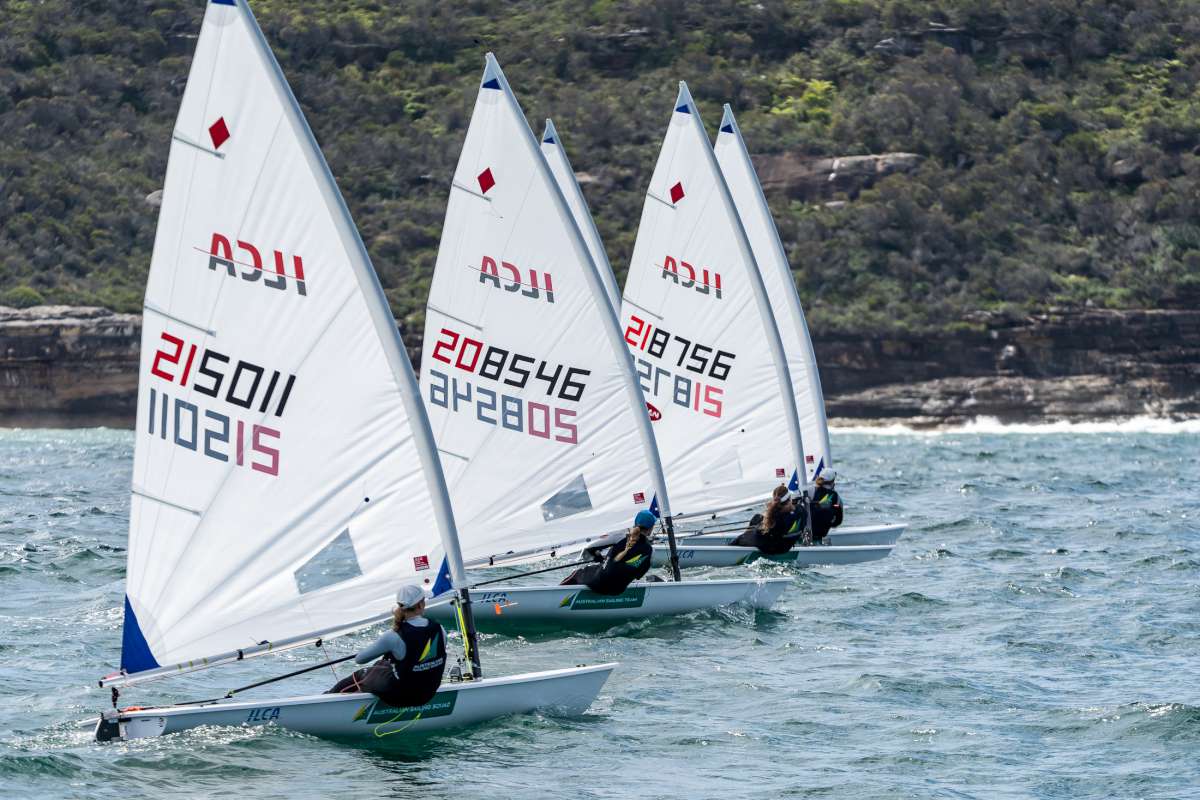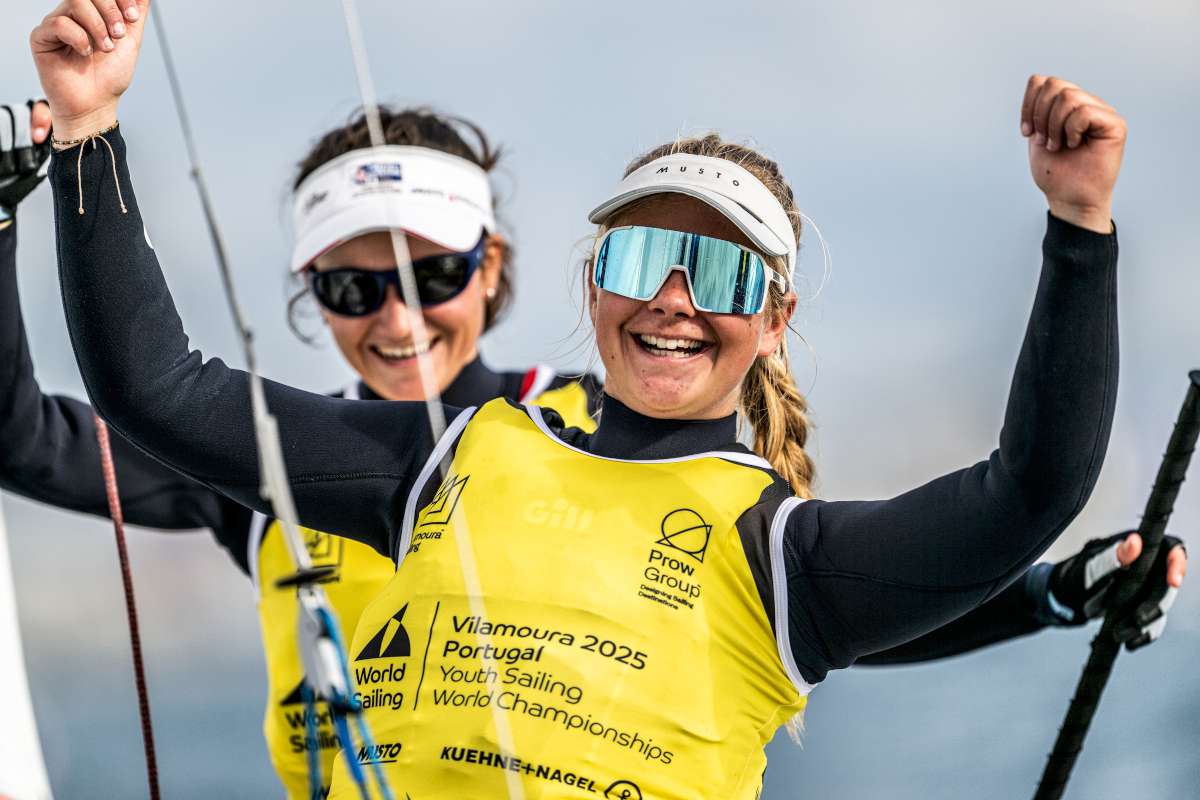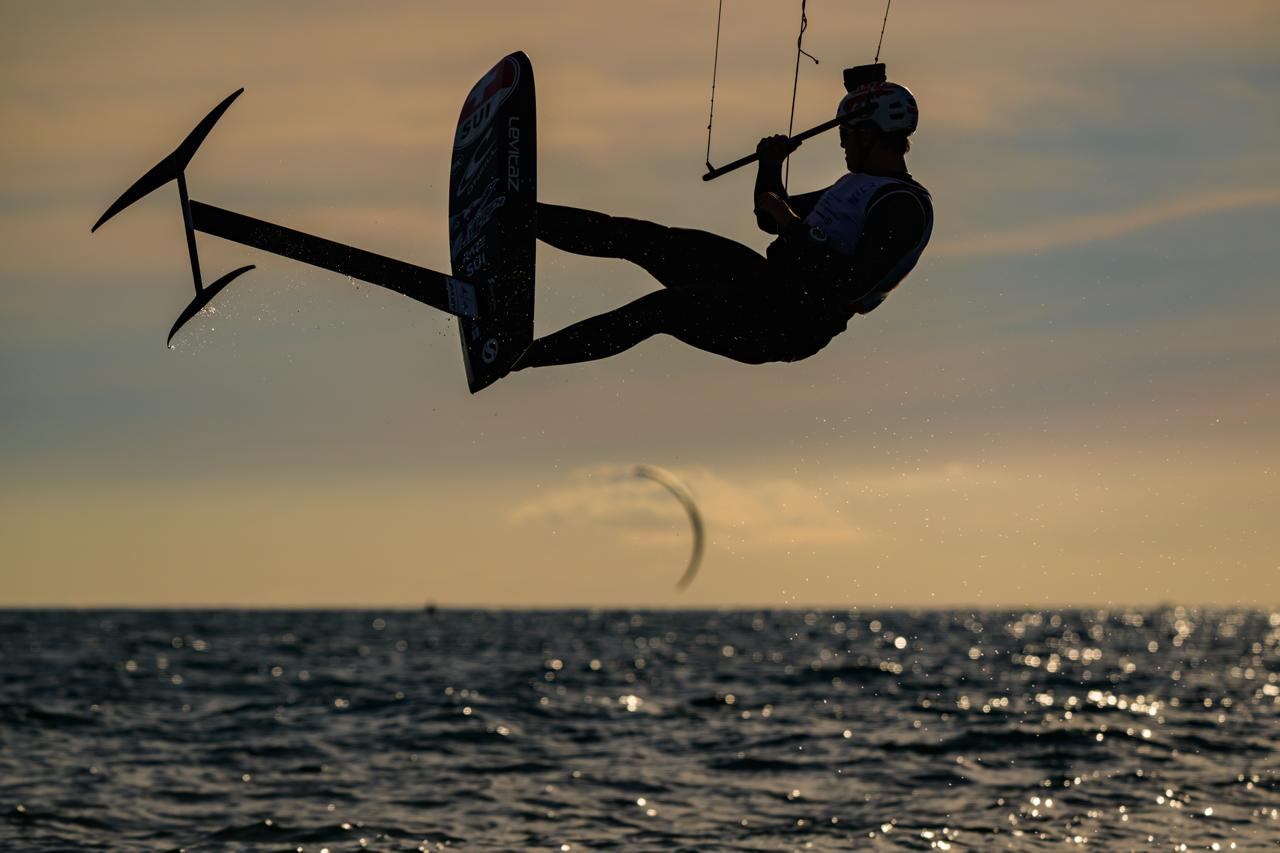Practical: Drawing up a cruise plan
Drawing up a cruise plan will increase the chances of a trouble-free cruise, writes Bob Couper, who here also gives some tips on river and estuary cruising and berthing.
Getting away from it all in a secluded waterway is one of the pleasures of owning a cruising yacht, but it is all the more pleasurable if some of the variables are taken out of the equation. You can do this by drawing up a basic cruise plan before you set out.
A cruise plan should include a preferred overnight anchorage location for the expected weather conditions, a planned course to reach it, including waypoints to ensure a safe passage and check progress, details of the anchorage's access (tidal heights, leads, hazards) and locations of other boltholes along the way should the weather deteriorate or change.
Simple passages through obstruction-free waters will probably require only a periodical check of the boat's position, marking it up on the chart and checking the GPS or that the correct bearing is being sailed to arrive within visual contact of the destination. Complicated passages that follow channels and need to avoid hazards will require more detail and planning attention. If tidal or river flows are involved, try to time the passage so that the boat goes with the flow rather than having to stem it.
Mud map
Rather than having to continually refer to charts down in the cabin, draw up a “mud map” that shows the position of navigation marks, isolated dangers, bearings and lines of sight and major features of the course plan for use in the cockpit.
“How far should I aim to go in one day?” is a common question but a difficult one to answer because there are many variables that will affect the answer. If cruising with the family for a few days, allow more time for recreational pursuits like swimming, walking, or exploring towns etc than if on a straight A to B cruise. For planning purposes a figure somewhere between 10-20nm is a good start. Averaging around three knots will give between 3-7 hours on the move. In the end it is best to err on the conservative side rather than set up a schedule that turns out to be a monster.
Casting off
Before casting off the mooring ropes, check mobile phone and radio reception, get an up-to-date weather and tide report and make any changes to the cruise plan for the day. If the weather looks unfavourable, it may be better to postpone for another day and just enjoy the local sights instead.
Next check if you can make wind and/or current flows work in your favour or how you will allow for them, decide what order that the mooring lines will be released, start the motor, warm it up for a couple of minutes, check any obvious other essentials and cast off.
Keep the motor revs and your speed low until the motor has reached its operating temperature. The latter can be checked by feeling the temperature of the cooling water telltale jet. Likewise, before you stop the motor on arrival at a destination, run the motor at idle speed for a short period to cool things down and avoid giving the motor a thermal shock.
The most common mistake made by skippers when they turn to motor off from a jetty etc, is to forget that the boat will not follow the bow path but rotate around a pivot point near the mast step. This causes the stern to swing in towards the jetty and hit it as the bow is swung out. And if there are currents, wind or adjacent closely moored boats hemming them in, the problems and collisions multiply. There are departure sequences that will minimise if not eliminate all these problems.
Casting off from an unrestricted berth
The simplest method is to cast off all the lines except the stern spring line (or stern line) – see Figure 1. With the stern quarter held close to dock (1), manually push the bow out until it is clear ahead (2) and then motor out (3). This technique can be used:
• When the boat is exposed to an offshore wind or offshore current.
• Where a wind and/or current is opposing the bow.
Casting off from a restricted berth
When hemmed in by other boats, the safest way to depart is to reverse out of the berth – see Figure 2. Cast off all the lines except a bow spring. Motoring forward will keep the bow against the dock and pivot the stern out (1). When everything is clear astern, release the spring line and reverse out (2). The same technique can be used where an onshore wind would blow you onto the boats at your stern and bow or, where the wind and/or current is over the stern.
Turning from a short jetty
A stern line can help to reverse out and turn quickly from a short jetty or marina finger see Figure 3. Start (1) with the stern line doubled around a jetty cleat or bollard and left slack so that it tightens as the boat reverses out (2). The doubled line then assists in turning the boat (3), preventing it being blown offshore and can be retrieved by letting go one end and pulling it clear of the jetty fixture.
Where are we?
The navigation skills needed to cruise coastal and semi-enclosed tidal or enclosed waters are more of a pilotage nature than those required to cross open oceans. The things that are most likely to affect your day are widely varying water depths, tidal flows or currents and the position of isolated dangers, marked or unmarked.
While the calibration, set-up and reliability of the depthsounder may not be a major issue crossing the vast depths of an ocean, it can be a critical factor in avoiding running aground in an estuary with its mix of deep water, sandbars, channels and tidal flats. Depthsounders offer an offset function that allows the user to select where the displayed depth is measured from (eg from the sensor, the water surface or below the lowest or selected hull point).
For a keelboat, the critical depth is the amount of water under the keel and the depthsounder offset should be set to display this. For a trailable yacht with a lifting or swing keel, the depthsounder is best set to display the depth of water under the skeg or lowest point of the hull – not including the keel which can be raised. On a trailable yacht, keep a detailed list of the depths for the keel, rudder and outboard leg relative to this near the helm position for quick reference when needed.
TOP TIP Set up the depthsounder to show the depth under the hull and set the shallow-water alarm to the depth of the keel plus half a metre.
While sailing in a channel, narrow or wide, one of the most important things is to know with certainty which way to turn if the water unexpectedly shallows. In this respect, an idea of the back bearing of the original approach will help. If approaching an area where the water shelves rapidly, approach at an angle to the expected shelf. This will enable the boat to be turned away faster to avoid grounding.
TOP TIP Always know where deep water is and the shortest way to it.
A situation commonly experienced on large tidal estuaries is the need to cross a tidal flow to a fixed point, eg a marked channel entrance. If an allowance is not made for the tidal flow, the path to the fixed point will end up being a curved one requiring continuous course corrections as the boat is swept “downstream” of its destination. The effect will be strongest at half tide and least near the times when the tide is turning. Importantly the size of the needed angle correction isn't dependent upon the length of the leg being sailed but will vary if your speed changes (eg the wind drops or increases). An increase in the boat's speed will require a decrease in the correction and vice-versa.
TOP TIP If steering across a tidal flow and the boat speed changes, steer a new course to compensate for it.
If the destination point is not visible, use the “Goto” function on the GPS to obtain its bearing. Then merely sail a course that results in the COG (course over the ground) on the GPS equalling the same value. When the destination point is visible (eg a navigation marker), select a point (eg a shiny roof) on the shore behind it as far away as possible and then steer a course that keeps the two points in line. If they start to go off line, steer the boat in the direction that the fixed sea point moves relative to the shore point.
TOP TIP Steering up-tide around five degrees in a 0.5-knot cross-tide or 15° in a one-knot cross-tide should keep the boat roughly on course in average conditions with a boat speed around four knots.
Ferry gliding
Ferry gliding is an efficient way to move a boat under motor bodily sideways across a current or strong tidal flow – see Figure 4. To start a ferry glide, turn the boat into the current and adjust the boat's speed so that it is just making progress against the current (1). Turn the bow of the boat slightly towards the direction desired (2) and the boat will begin to move sideways.
Adjust and balance the boat's speed and helm so that the boat continues to move in the direction required without making forward headway (3). Increasing the motor revs when holding the same rudder setting will move the boat's sideways course up-current while decreasing them will move it down-current.
Increasing the helm when maintaining the same motor revs will increase the boat's speed sideways and move the boat's course downstream (4). Putting the helm down will decrease the boat's speed sideways but move the boat's course upstream (5). With a little practice and using both helm and motor revs, you will be able to gain a fine degree of control on the boat's movement.
Cruising rivers
River passages are a relaxing way to cruise, particularly with a young family or as a winter getaway. But for first-time Huckleberry Finns, picking out the shallow spots and intricate channels can present a formidable challenge. Fortunately rivers obey a number of rules, making it easier to predict the likely position of their channels and trouble spots. Nature also helps by marking them with her own navigation sign posts (see CH May 2002).
River passages through bushland areas can be extremely confusing to the uninitiated trying to work out where they actually are. Every bend can easily look the same. The key is to have the best map of the river possible, even if it is only a road map, and to continually mark the boat's position on it. Where maps are scarce, internet sites like Google Earth may provide an option.
Using the ship's log to record distances travelled is fraught with errors due to current flows affecting the readouts. To get an approximate distance, guess what the average speed of the current flow would have been during the day, multiply it by the time underway and add or subtract it from the day's log reading depending on whether the boat was going with or against the flow. eg Distance travelled = Current average speed multiplied by time in hrs + log distance (+/-).
Overhead obstructions
Approach all potential overhead obstructions under motor unless absolutely positive that the boat will fit. Where a current is flowing, approach against it to use it as a brake. Bring the boat up to the obstruction dead slow to check the clearance. In tidal waters this may mean waiting for the tide to change.
Travelling with the current puts the boat in risk of being swept into the obstruction – see Figure 5. If forced to travel with the current (1), turn the boat around (2) and allow the current to bring the boat down to the obstruction using the motor on “ahead” as a brake. Alternatively, keep the motor running and drop an anchor upstream to give protection against motor failure. Slowly let out anchor cable so that the boat closes the distance to the obstruction allowing the clearance to be safely checked (3). If the clearance is tight, tilt the boat over sideways or lower the mast after recovering the anchor.
Protecting the outboard
The four most common forms of damage to outboards when cruising rivers and estuaries are:
• Prop damage from hitting snags, reefs and other underwater obstructions.
• Overheating of the motor caused by blockage of the cooling water intake by plastic and other river rubbish, or coarse sand ingestion damaging the water pump.
• Vagrant fishing lines getting caught up in the prop, cutting out the seals around the drive axle thus allowing water into the drive mechanisms.
• Galvanic corrosion damage to alloy motor components from stray electrical currents due to the installation of the incorrect anode on the outboard.
Keep checking the cooling water flow and stop the motor at the first sign of trouble. Carrying a spare pump impellor is a good move, particularly if travelling in more remote areas where getting a replacement may not be easy. Most outboards nowadays have some sort of system to cut fishing lines that get wound around the prop shaft to protect the seals. But even so it pays to check and remove any bits that are still there at the end of each day.
It is good practice in trailable and lifting-keel yachts to travel under motor in rivers with the keel lowered just below the depth of the propeller. This will provide better steerage and act as an early warning of an underwater obstruction before it hits the propeller. However, don't lower a swing keel too far. Keep the keel cable unexposed to prevent snags getting hooked on it or being caught between it and the keel. Know how many turns of the keel winch puts the keel tip below the outboard prop and how many before the keel wire starts to appear below the hull.
Carrying a spare prop on long trips in remote waters where the potential for damage maybe higher. Travelling at a safe speed (particularly when approaching banks, anchorages or the shore), keeping a good watch for unusual ripples in the water surface that could indicate an underwater obstruction and good navigation are essential to avoid propeller damage.
Anodes
Sacrificial anodes that are fitted to outboard legs and hulls are there to give protection from the effects of stray electrical currents flowing between any dissimilar metal parts that are immersed in the water. These currents can result in galvanic corrosion to alloy components such as the propeller and lower gear casings. On an outboard motor, the first sign commonly appears as the “eating away” of the fine trailing edges and “bubbling” of the propeller surface, resulting in cavitation and power loss.
One little known fact is that different waters (eg salt or fresh water) require different attributes from an anode for it to give the desired protection. The metal used to make the anode is critical. The most important point is that the metal must be low on the galvanic scale to be sacrificial (ie to be eaten away in preference to the protected components). Four metals are used that are in this category:
• Zinc, which works well in saltwater but is virtually useless in fresh water.
• Magnesium, which is great in fresh water but reacts badly in salt water.
• Aluminium which works reasonably well but needs to have the layer of oxide that forms on its surface continually removed to stop it insulating the anode.
• Aluminium alloys that have zinc and indium mixed in with them to overcome the oxide insulating problem. These are claimed to work in all waters.
You can get away on a short trip using the wrong anode. But for long periods in a different water environment, check that the right anode is fitted to avoid a costly repair situation developing.























